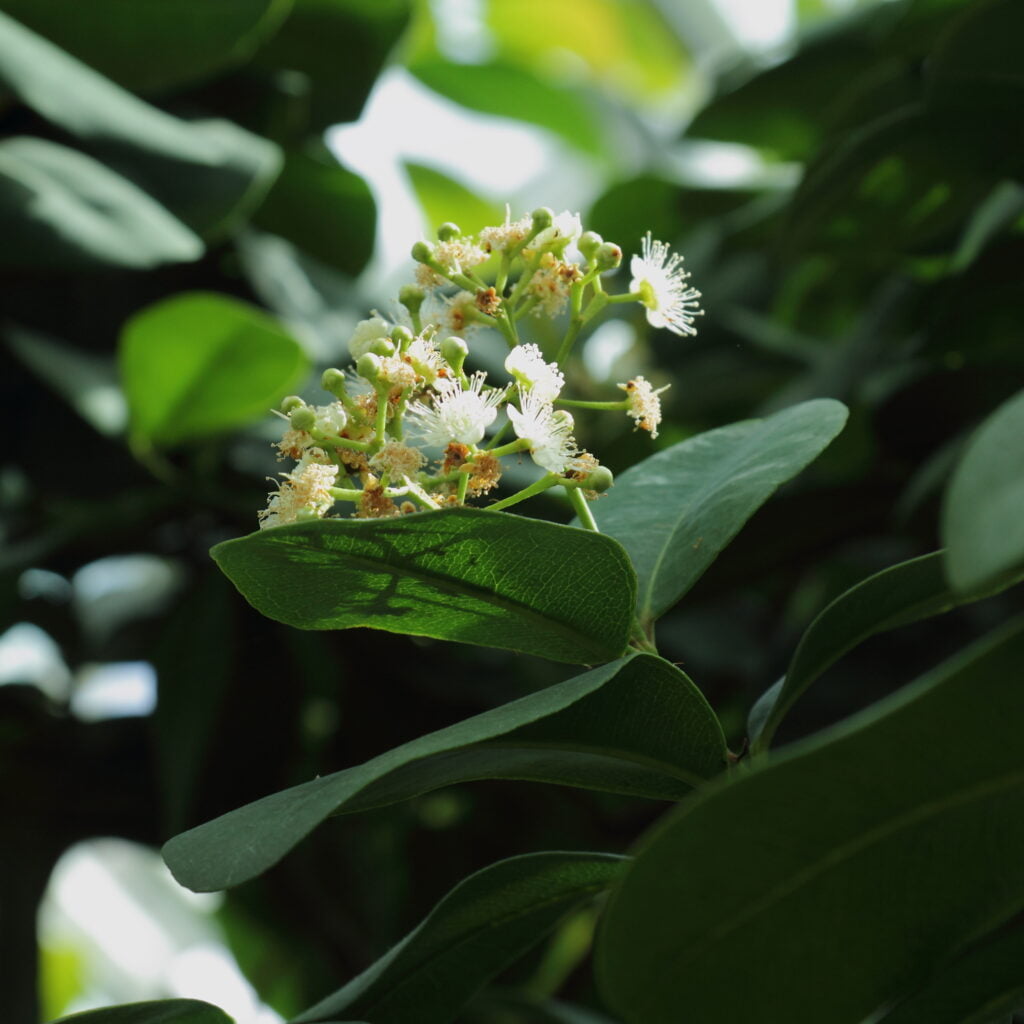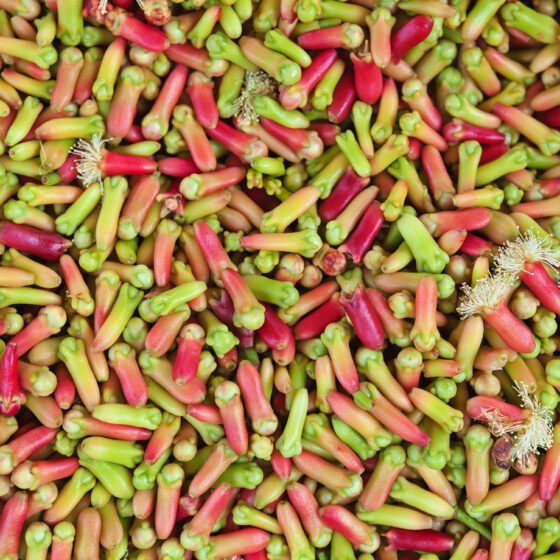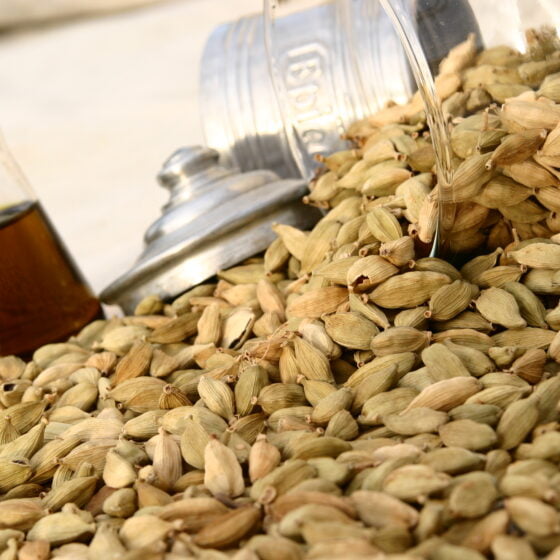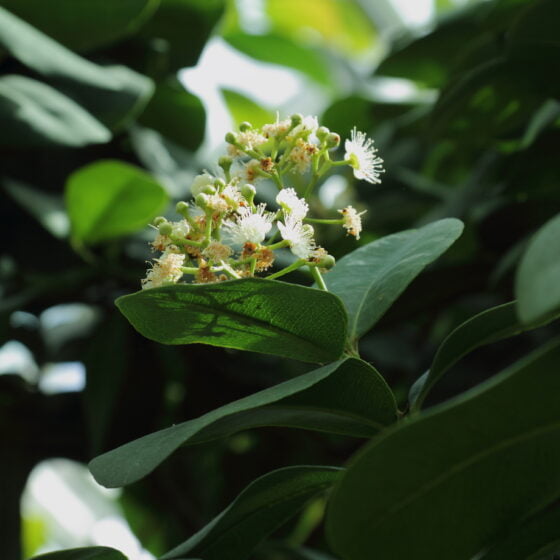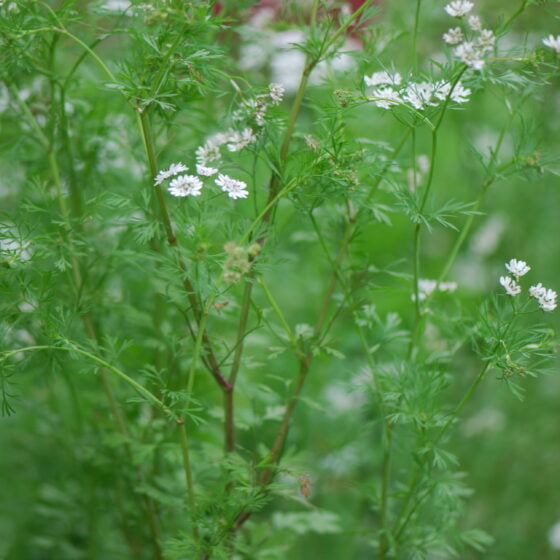
Pimento berries Jamaica
Pimenta dioica
General data
Harvest Calendar
- J
- F
- M
- A
- M
- J
- J
- A
- S
- O
- N
- D
Product details Fragrance side
The famous all-spice is a spicy note that can be used on its own. It will blossom at the top of fruity-floral scents but also in an oriental or chypre. Its peppery, cinnamic and balmy facets will allow a strong link between fresh top notes and a more gourmand or woodsy base note.
About
Pimento is a branched evergreen tree that grows up to 12 meters high. It has leathery, smooth leaves of a dark, glossy green, resembling those of the laurel. They give off a wonderful aroma of clove when crushed or rubbed, as they contain secretary glands containing odorant molecules from which the essential oil is extracted. But it is the small, brown, globular, sweet-pulped berries that boast the richest, most powerful fragrance. When crushed, they give off a delicious fragrance of cinnamon, nutmeg, clove, and pepper. Such varied olfactory intensity earned it the nickname “allspice.” The berries are harvested between September and March by the Jamaicans, who climb the trees and break the branches by hand. This process serves to prune and does not harm the tree. In fact, the use of machetes is prohibited because iron of the tool reacts with the tannic acid in the branches. This reaction is toxic to the tree, which, as a result of such exposure, can die in two years. The cut branches are then flailed on the ground to free the berries to be gathered. These fruits must still be green, otherwise they lose their aroma. They are sun-dried for four to ten days and crushed prior to being distilled.
Pimento is native to Jamaica, Mexico, Cuba, and Haiti. In Jamaica, it spreads spontaneously and forms veritable forests in some mountainous areas. Known by the Central American aboriginal peoples, allspice was used as a spice to flavor chocolate, as well as for embalming. The first pimento seeds were introduced to Europe by Christopher Columbus. Subsequently, the English conquest of Jamaica in 1655 led to the massive export of this spice.
Fragrance side
The famous all-spice is a spicy note that can be used on its own. It will blossom at the top of fruity-floral scents but also in an oriental or chypre. Its peppery, cinnamic and balmy facets will allow a strong link between fresh top notes and a more gourmand or woodsy base note.
About
Pimento is a branched evergreen tree that grows up to 12 meters high. It has leathery, smooth leaves of a dark, glossy green, resembling those of the laurel. They give off a wonderful aroma of clove when crushed or rubbed, as they contain secretary glands containing odorant molecules from which the essential oil is extracted. But it is the small, brown, globular, sweet-pulped berries that boast the richest, most powerful fragrance. When crushed, they give off a delicious fragrance of cinnamon, nutmeg, clove, and pepper. Such varied olfactory intensity earned it the nickname “allspice.” The berries are harvested between September and March by the Jamaicans, who climb the trees and break the branches by hand. This process serves to prune and does not harm the tree. In fact, the use of machetes is prohibited because iron of the tool reacts with the tannic acid in the branches. This reaction is toxic to the tree, which, as a result of such exposure, can die in two years. The cut branches are then flailed on the ground to free the berries to be gathered. These fruits must still be green, otherwise they lose their aroma. They are sun-dried for four to ten days and crushed prior to being distilled.
Pimento is native to Jamaica, Mexico, Cuba, and Haiti. In Jamaica, it spreads spontaneously and forms veritable forests in some mountainous areas. Known by the Central American aboriginal peoples, allspice was used as a spice to flavor chocolate, as well as for embalming. The first pimento seeds were introduced to Europe by Christopher Columbus. Subsequently, the English conquest of Jamaica in 1655 led to the massive export of this spice.
Other type of extracts
(Spicy)
